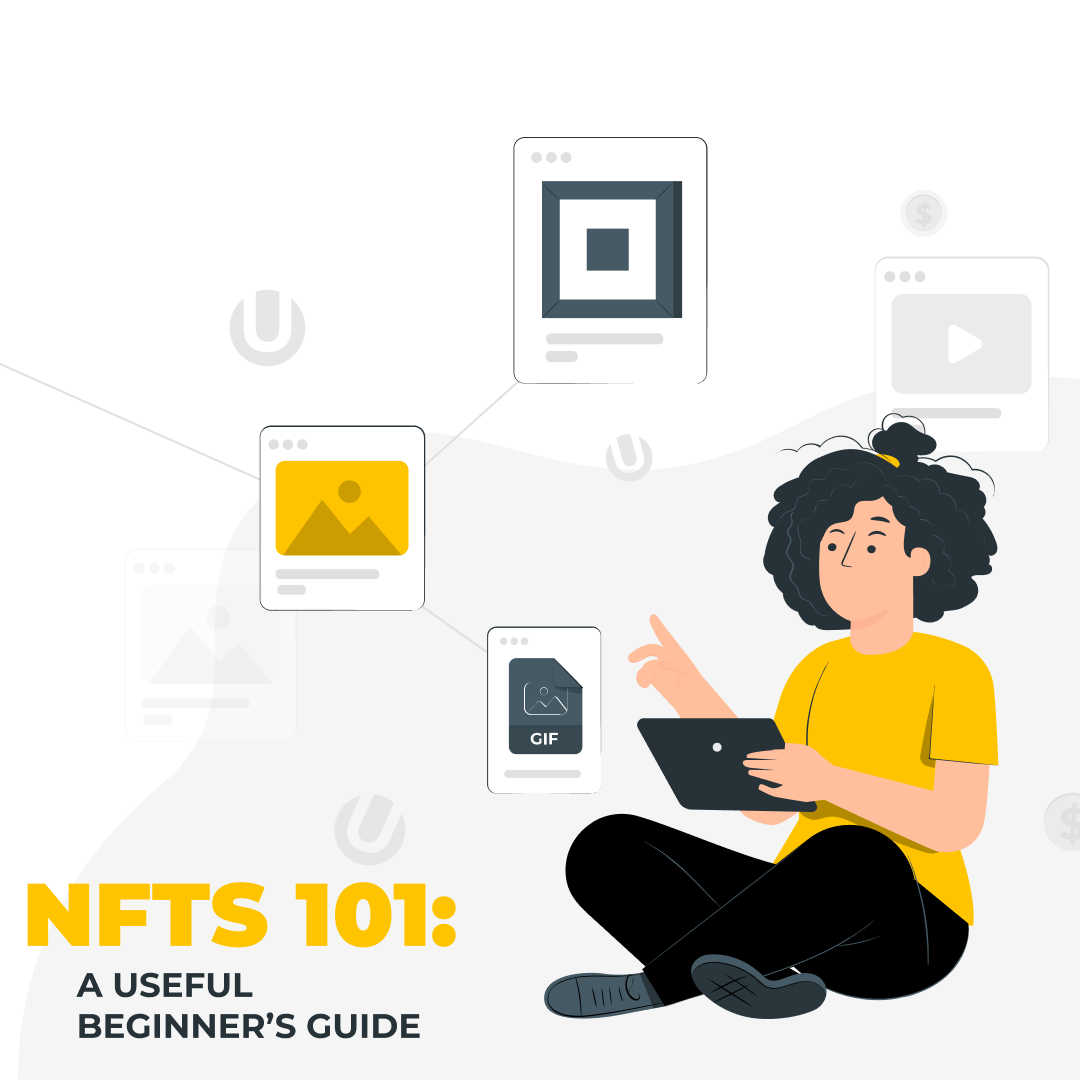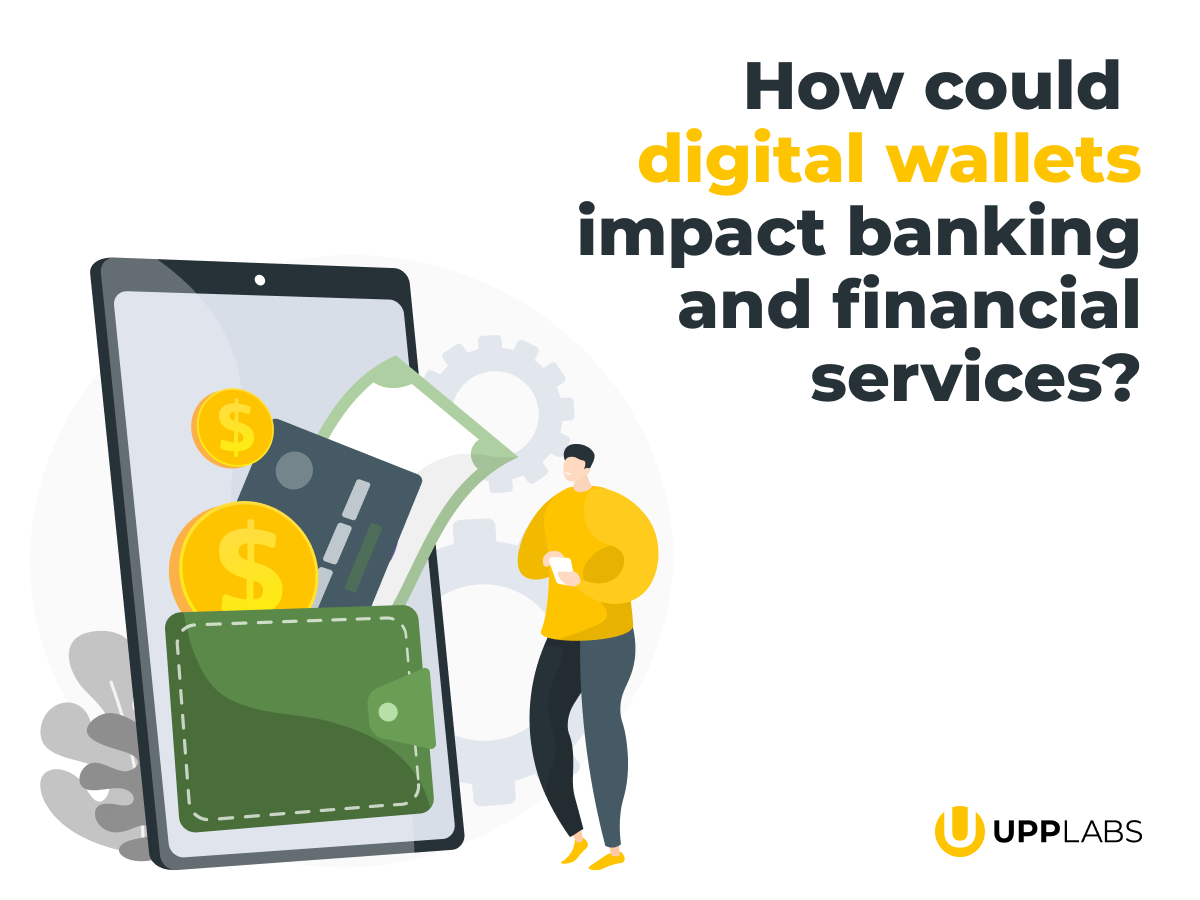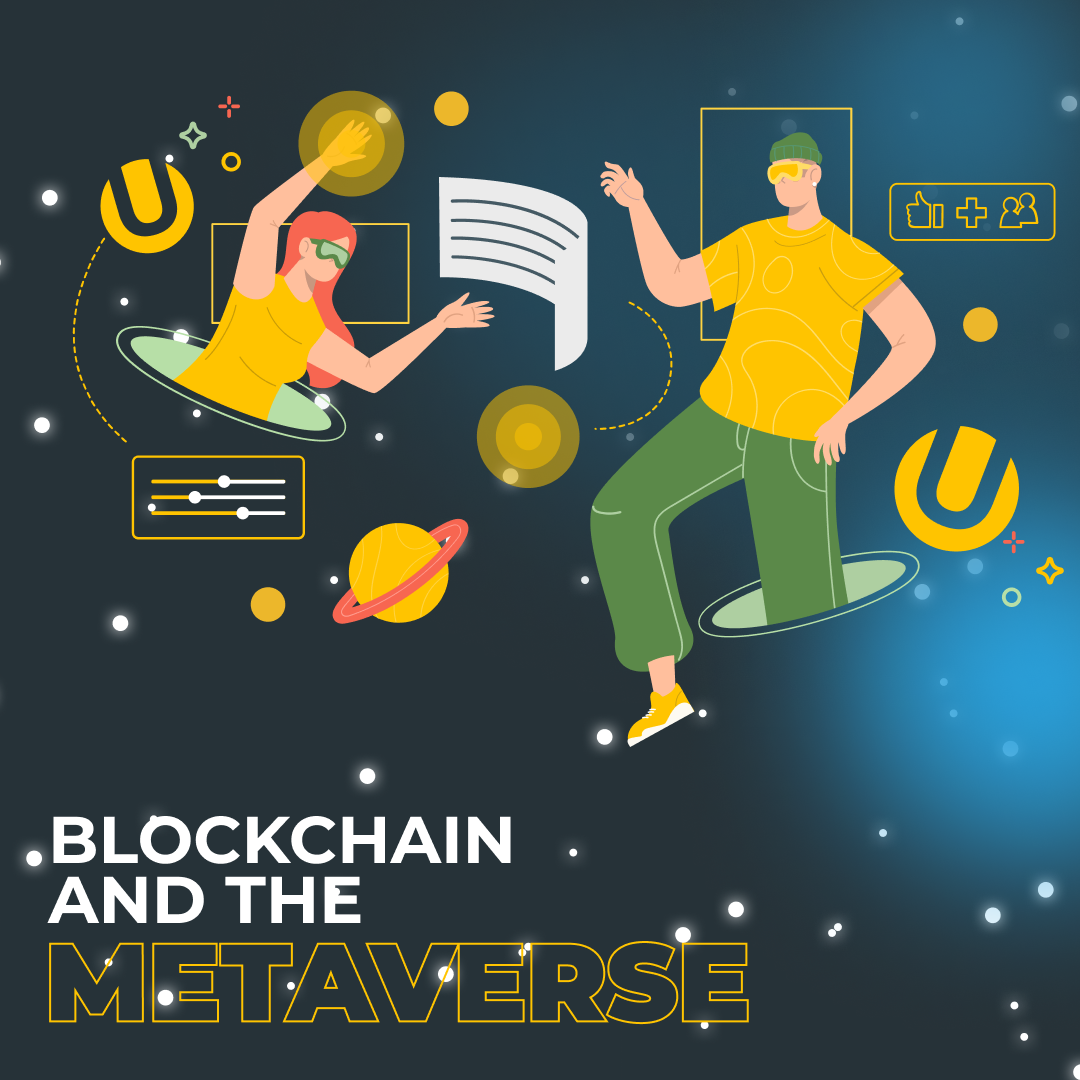The emergence and popularity of NFT tokens are already changing the market and creating new formats and concepts of ownership in the digital space. Thanks to the tokens, content creators can earn money without intermediaries, receiving funds from the audience.
Tokens are already changing the system of digital content copyright and can protect it from illegal copying. It is not only a new market for collectors but also a new way of licensing content. This guide will reveal all aspects of NFT’s world and show you that you can now tokenize any digital object.
Few definitions
NFT is one of the newest technologies that came from the blockchain world. Let’s define the main terms before moving forward:
Blockchain is a database that keeps all records of transactions for the purchase and sale of currency, bitcoins, or tokens between users. Every time you buy something related to bitcoins, this information is recorded in the database. Unlike conventional data stores, information from the blockchain cannot be deleted or corrected – you can only add new data. Thanks to this, in practice, with the right knowledge and skills, it is possible to track the entire chain of transfers of a specific asset from hand to hand.
The token is any digital asset — an image, a song, a text, a digitized copy of an item from the offline world. A token is not a cryptocurrency or money – it is a certain unique commodity.
NFT (Non-fungible token) is a special type of token/asset, a record in the blockchain, which can be used to digitize a product or object: a picture, a song, or even a meme. It is a digital certificate that confirms the unique and exclusive right to own any digital asset.
What is an NFT?
NFT is a non-fungible token. It is a crypto asset representing something unique and collectible using blockchain technology. Each NFT is unique and exists in a single copy; it cannot be divided, and all information about its author, buyer, and transactions is securely stored in the blockchain.
NFTs are tokens that can be used to denote ownership of unique objects. They allow you to tokenize works of art, collectibles, and even real estate. They can only have one official owner, and the Ethereum blockchain secures them, so no one can change the owner record or make a copy of the NFT.
The following are the entities that NFT tokens can represent:
- Digital art:
– GIF files
– Collectible items
– Music
– Video - Physical objects:
– Documents for the car
– Tickets to the real event
– Tokenized invoices
– Legal documents
– Signatures
And many other possibilities.
NFTs are typically created by uploading files, such as digital artwork, to an auction. It creates a record that contains a reference to the cryptographic hash of the digital file representing the NFT. The tokens can then be purchased in cryptocurrency and resold.
With the help of NFT, developers have solved the problem of securing ownership rights to digital objects. Information about the owner and his tokens is fixed in the blockchain. It is impossible to replace or delete the data.
Since the tokens are stored in an open blockchain format, information about the product unit, its owner, and the history of operations with this product will always be available and true. At any time, you can view who created a particular product and who owns it now.
Thanks to the NFT, game developers, musicians, fashion designers, and artists got the opportunity to present their products on the market without intermediaries. And the value of such goods reaching collectors will increase depending on the popularity of these products.
Why do people buy NFTs?
Some people buy NFTs to secure ownership of a virtual item, and others buy NFTs for their collection. But most people buy them to sell more expensively. NFT sales reached $40bn last year, and the 2022 total has already exceeded that at more than $42bn.
The interest in NFT tokens led to the emergence of several startups working with this technology. For example, the developers of the Genopets game offer gamers to move and earn non-exchangeable tokens for their physical activity. The game is really complex, there are virtual worlds, and you can grow your digital pet, but you can obtain the most points for physical activity – the game can read information from a smartphone or a gamer’s fitness tracker.
The first experiments with non-interchangeable tokens started in the 2010s, but the real success came only after a performance with a Banksy painting in March 2021. The artist turned his work Morons (White) into NFT and sold it at an auction for $380,000. Before the start of the auction, the real painting was destroyed, and the buyer got its digital token – the only one in the world.
Banksy, Morons (White)
The virtual real estate project Decentraland, created in 2015, which can be compared to a metauniverse, became one of the record holders among NFT deals. The Canadian company Tokens.com bought virtual real estate for $2.4 million.
Buyers plan to use the purchased “meters” to create spaces where they will sell virtual clothes and avatars for users of the meta-universe.
World of Decentraland
Another example of NFT coming to the masses is the full-fledged launch of the blog platform Mirror.xyz. This service is a combination of traditional crowdfunding and NFT, which offers its subscribers to create content and buy it in the form of NFT.
Mirror.xyz
Jack Dorsey, the founder of Twitter, created and sold NFT of his first tweet (and the first in the entire social network. For a digital copy of the message “Just setting up my Twitter”, which he published on March 21, 2006, the buyer – the CEO of the Malaysian startup Bridge Oracle Sina Estavi – gave $2.9 million. Dorsey sent the received money to a fund to fight the coronavirus in Africa.
How does it work?
NFTs come in all shapes, sizes, and even uses. Purely collectible digital art NFTs are quite limited in what you can do with them. You can trade them, of course, but NFT photos are not much different from regular printing in terms of utility.
To purchase NFT tokens, you need to open an Ethereum wallet. With the help of a wallet, you can authorize on all platforms that trade tokens. The ETH wallet will identify you with your public and private key and provides you the authorization on all platforms that trade tokens.
Open Sea, SuperRare, Rarible, Auctionity – you can buy NFT assets on these marketplaces. There is no universally correct way to collect NFTs and the way to earn using them. The value of an NFT can increase or suddenly decrease after its purchase.
Creating and issuing your NFT, i.e., tokenization of any object is called minting. The easiest way is to use Rarible or OpenSea. However, the process is different depending on the platform. On Rarible, for example, your work “mints” immediately, so you have to risk and pay for a promotion. And on OpenSea, the process will take place only when you find a buyer for your work.
NFT tokens allow the audience to financially support their favorite author and give users the right to use digital content, post on social networks, use it as an avatar, etc. And from that moment, the NFT creations are separate collectible assets, and their value can rise or fall over time.
The initial value of the token is created directly by the author. The buyer of the NFT gets it already with the commission markup of the platform where the trades were conducted. And then, as in traditional art, the price depends on the demand, the stability of the brand or the author of the NFT, and many other factors.
How to create an NFT?
If you have something to tokenize, all you need to do:
- Create a crypto wallet, for example, Metamask, Enjin, or Trust Wallet.
- Choose an NFT trading platform. It can be OpenSea, Rarible, SuperRare or even Binance.
- Upload the file you want to “tokenize” and create your NFT.
- Top up your crypto wallet to pay fees and commissions.
- Put your work up for sale or auction. Wait for somebody to buy your NFT.
There are plenty of other trading platforms than we listed above. You should better compare the conditions of the trading platforms so as not to be disappointed in your choice later.
The terms of the commission for users can be different: from a sales commission to a commission for the placement of an asset. It means you will have to pay before the user earns from the sale of the NFT token.
To increase your chances of selling, you must create a work of artistic value or something new and unusual.
Like any other asset, you can buy and sell your NFT token. The vast majority purchase tokens to sell them at a higher price. Now the market is on the rise, and many investors see this as an opportunity to make money.
To invest in NFTs, you must go through the same procedure described above. Just don’t download your works, only buy others’ works.
Factors Determining the Value of NFTs
1. Rarity
The high rarity examples are the first-of-its-kind artwork from a well-known author in the digital art industry or NFT created by a celebrity. Another rarity factor is the action that the NFT provides, such as in a video game. People are attracted to these NFTs because of their intrinsic value and on-chain proof of ownership of such an asset. It gives a sense of exclusivity and determines the premium value of the NFT.
Prominent examples of the unique effect in the crypto industry are the first CryptoKitties, “Everydays – The First 5000 Days” by Beeple, etc.
2. Utility
The usefulness of the NFT defines by its real-world application in the physical or digital world. For example, some NFTs are more than just collectibles; they can be used in games as virtual lands, spells, or characters. These characteristics give NFTs a value that accumulates over time depending on the popularity of the main project. As the community of decentralized game players grows, more will be willing to pay significant amounts for a unique card.
3. Materiality
Some NFTs are tied to real-world objects, which gives them value in ownership of a tangible object. Anything can connect to an NFT to secure ownership, although this does not make the object unique or in demand. The core value of such an object will be determined by its practicality, rarity, and the satisfaction it brings to users. Examples of these are tickets to concerts or events or property rights.
Conclusion
Unlike digital files that can be copied endlessly, traditional works of art are valuable because they are one of a kind. NFTs allows you to tokenize artwork, video, or music, creating a digital certificate of ownership that you can buy and sell. Irreplaceable tokens continue to spread across industries and are now even available for trading on eBay, one of the largest online marketplaces in the world. This case could increase the availability and popularity of NFTs as tokenized assets.
As a new collectible form of contemporary art, NFTs allow artists to monetize their work without third parties. So it is unlikely that creators will easily give up an independent source of income. For large investors, NFT is a promising way for capital investments.
If you would like to know more about NFTs and the blockchain, UppLabs is ready to answer all your questions and consult on your business.



